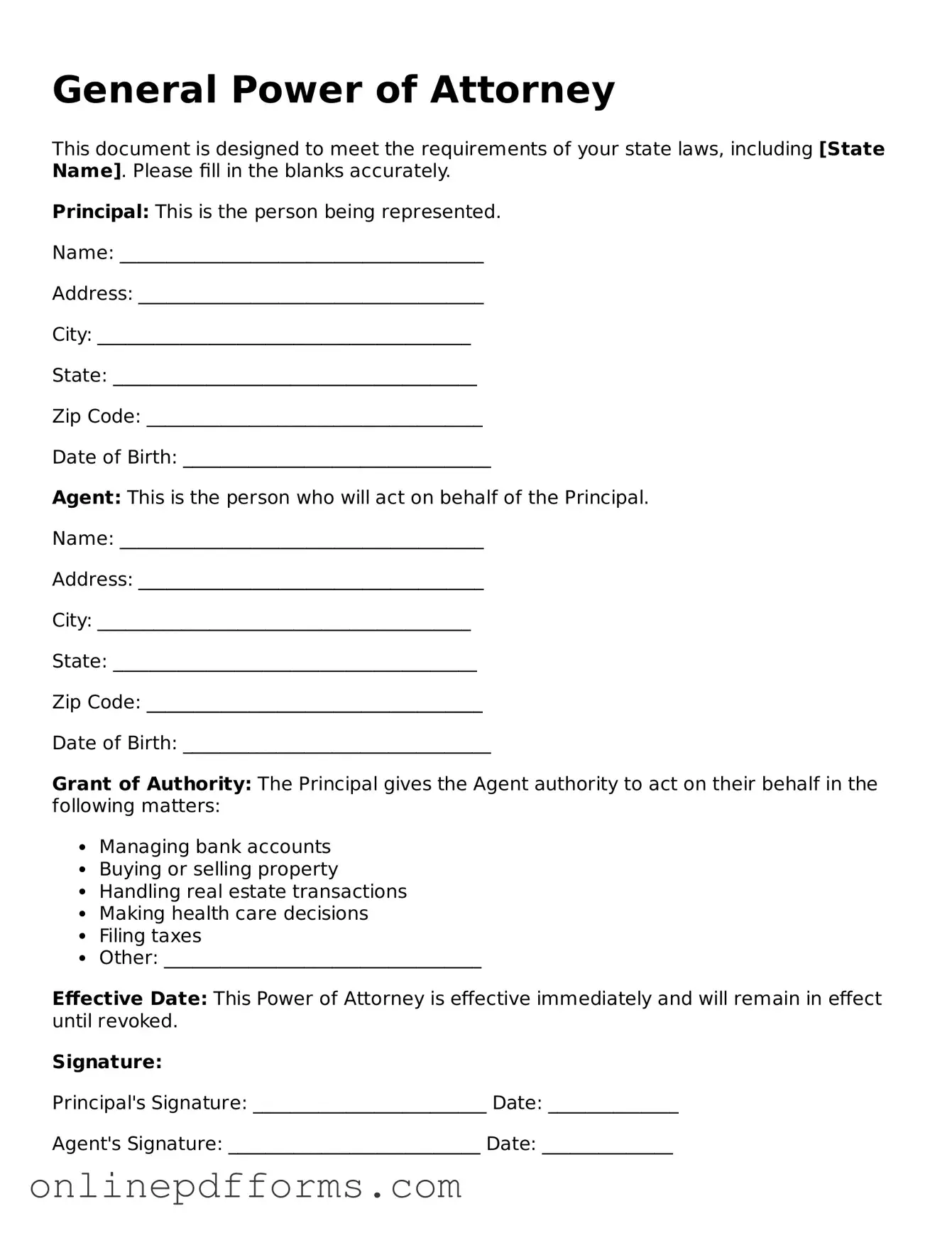The Durable Power of Attorney is closely related to the standard Power of Attorney. Both documents allow an individual to appoint someone else to make decisions on their behalf. The key difference lies in durability; the Durable Power of Attorney remains effective even if the principal becomes incapacitated. This ensures that the appointed agent can continue to act in the principal's best interest without interruption.
A Medical Power of Attorney is another document similar to the Power of Attorney. This specific form grants authority to an individual to make healthcare decisions for someone else. It is particularly important when the principal is unable to communicate their wishes regarding medical treatment. This document focuses solely on health-related decisions, unlike the general Power of Attorney, which may cover financial and legal matters as well.
The Living Will is akin to the Power of Attorney but serves a different purpose. While a Power of Attorney allows someone to make decisions on behalf of another, a Living Will outlines an individual's preferences for medical treatment in situations where they cannot express their wishes. This document is crucial for guiding healthcare providers and family members during critical moments.
A Financial Power of Attorney is a specialized form that focuses solely on financial matters. It empowers an agent to manage financial transactions, pay bills, and handle investments on behalf of the principal. This document is essential for individuals who want to ensure their financial affairs are managed according to their wishes, especially during periods of incapacity.
The Healthcare Proxy is similar to the Medical Power of Attorney. It designates an individual to make medical decisions when the principal is unable to do so. Both documents aim to ensure that healthcare choices align with the principal’s values and preferences. However, a Healthcare Proxy may not address all aspects of medical treatment as comprehensively as a Medical Power of Attorney.
The Revocable Trust can also be compared to the Power of Attorney. A Revocable Trust allows individuals to place their assets into a trust, which they can manage during their lifetime. Upon incapacitation or death, the trust provides a clear plan for asset distribution. While the Power of Attorney grants authority to act on behalf of someone, a Revocable Trust directly manages the individual’s assets.
The Guardianship document is related in that it involves decision-making for individuals who cannot care for themselves. A Guardianship is established through court proceedings and appoints someone to make decisions for a minor or an incapacitated adult. Unlike a Power of Attorney, which is voluntarily created, Guardianship is a legal intervention to protect vulnerable individuals.
The Advance Directive encompasses both the Living Will and Medical Power of Attorney, making it a comprehensive document for healthcare decisions. It allows individuals to express their medical preferences and designate an agent to make decisions if they cannot do so. This document ensures that a person's healthcare choices are respected and followed in critical situations.
The Bill of Sale, while different in function, shares similarities with the Power of Attorney in terms of authorization. A Bill of Sale transfers ownership of personal property from one person to another and requires the signature of both parties. This document serves as a legal record of the transaction and demonstrates the authority of the seller to transfer ownership.
